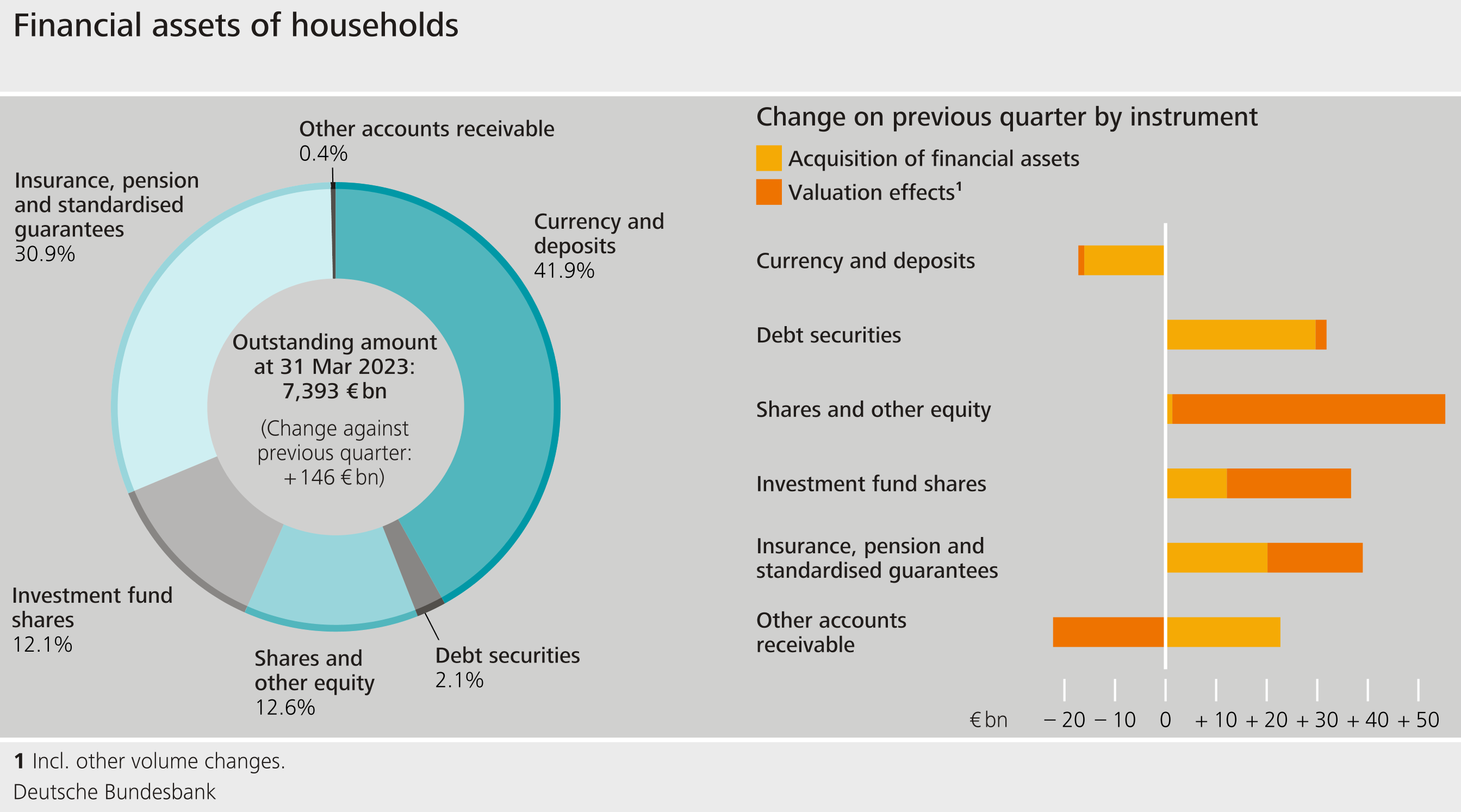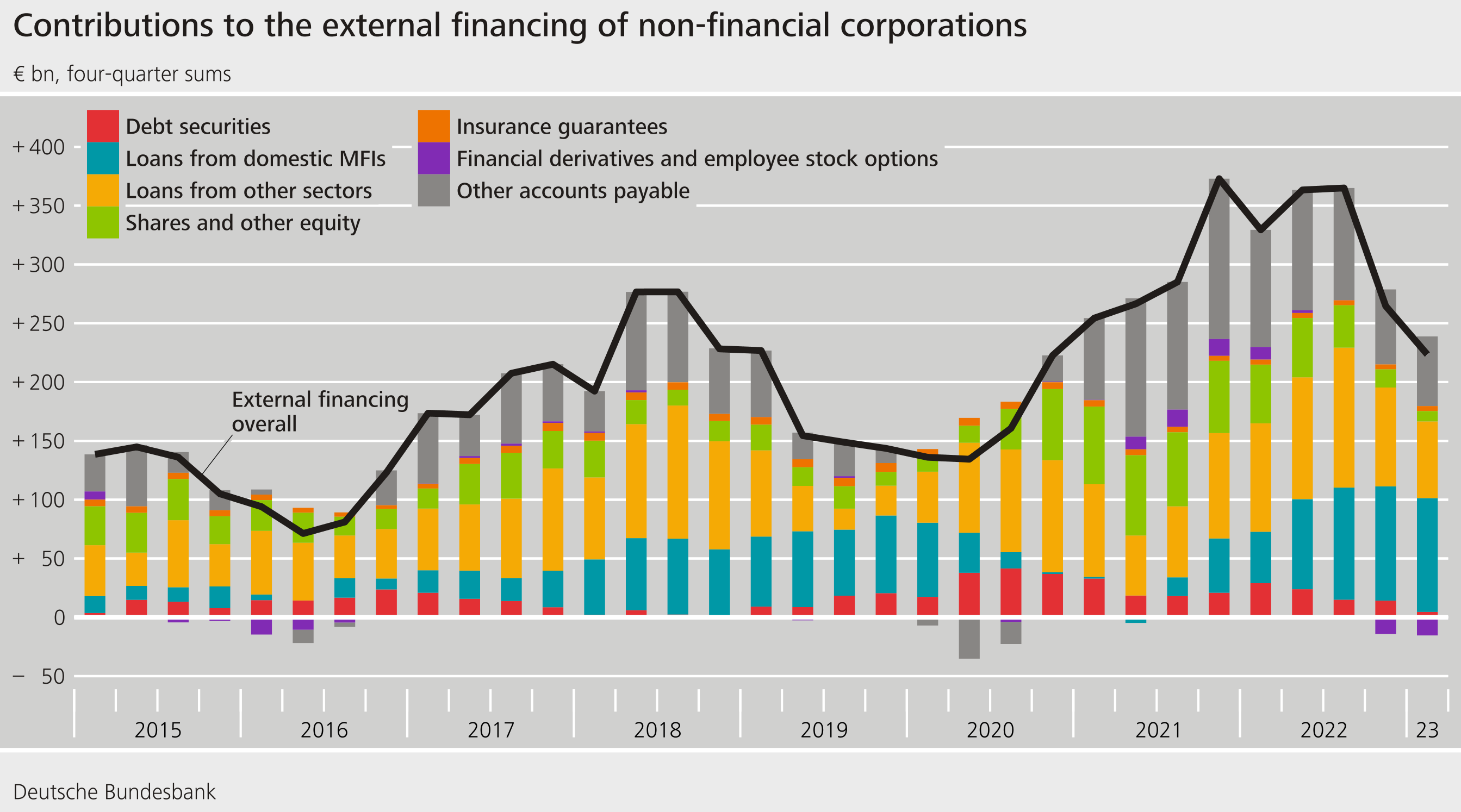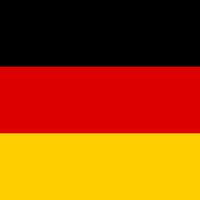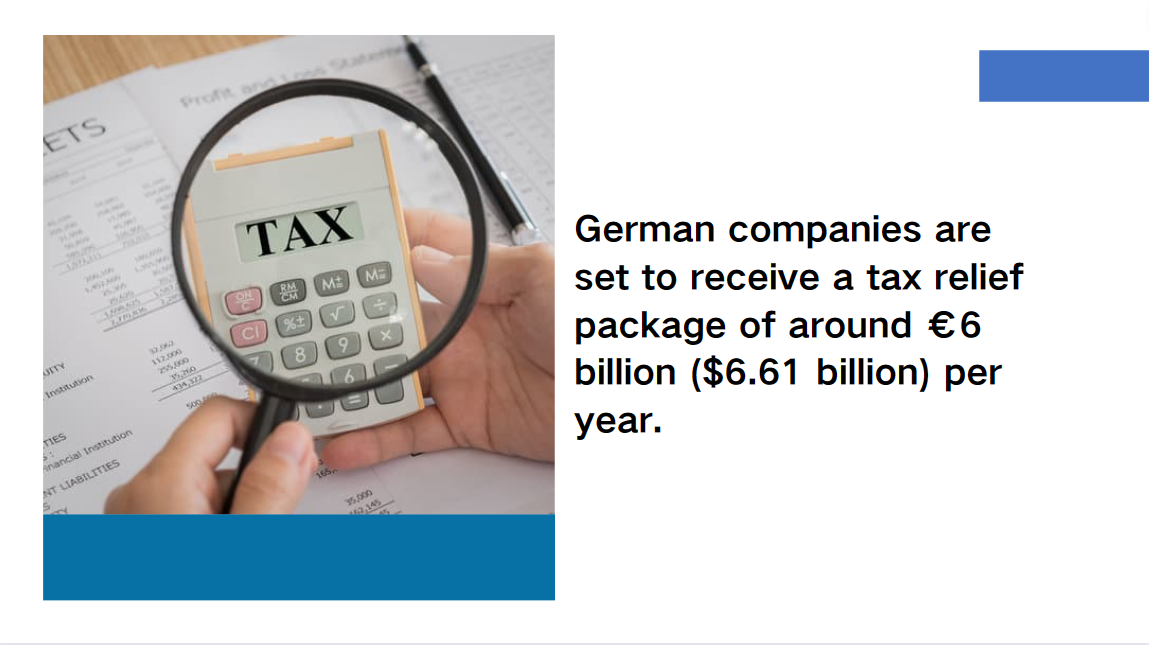Acquisition of financial assets and external financing in Germany in the first quarter of 2023
Increase in households' financial assets
In the first quarter of 2023, households’ financial assets grew by €146 billion, standing at €7,393 billion at the quarter’s end. Following the declines in the first three quarters of 2022, the financial assets appear to be following the upward trend of the fourth quarter of 2022. Households increased their claims by a total of €70 billion and recorded valuation gains of €76 billion.

Valuation gains were recorded in most items. While they were particularly pronounced for listed shares (€38 billion), especially compared with the first three quarters of 2022, investment funds and pension and insurance claims, posting €25 billion and €19 billion respectively in valuation gains, also proved lucrative for their holders.
In addition, households increased their holdings of most instruments. The purchase of debt securities stood out, in particular, at a historical high of €30 billion. As in the previous quarter, this development was due not least to rising interest rates. This is also consistent with the fact that, for the first time since 2006, households reduced their holdings of currency and deposits by €16 billion net overall. Currency holdings themselves remained virtually unchanged, while sight deposits were reduced by €56 billion, more than ever before. Time deposits rose considerably, going up by €45 billion, meaning that there was a shift from short-term to longer-term deposits.
Households’ liabilities remained virtually unchanged on the quarter, amounting to €2,138 billion. The debt ratio thus fell to 54.4%, which was attributable to the nominal increase in aggregate output. The debt ratio represents debt as a percentage of nominal gross domestic product (four-quarter moving sum). Taken together, households’ net financial assets grew by €144 billion in the first quarter, rising to €5,255 billion.
External financing of non-financial corporations still relatively weak
Non-financial corporations further scaled back their external financing to €20 billion in the first quarter of 2023. This figure was €42 billion in the preceding quarter, and €95 billion in the third quarter of 2022. Borrowing, in particular, was weak compared with these quarters (€15 billion). Non-financial corporations repaid short-term foreign loans worth just under €34 billion on balance, the highest amount ever repaid in a single quarter. Such loans had expanded significantly in 2022, when liquidity needs were particularly high.
Loans from the government, including coronavirus assistance loans, were also repaid in the reporting quarter. In annual terms (four-quarter moving sums), the external financing of non-financial corporations again also slowed considerably.

At the end of the quarter, the financial assets of non-financial corporations stood at €6,128 billion, up €91 billion on the previous quarter. Holdings of shares and other equity as well as loans grew so sharply (€69 billion and €28 billion, respectively) that they offset the considerable decline in currency and deposits (-€51 billion) and in financial derivatives and employee stock options (-€27 billion). On the assets side, non-financial corporations suffered valuation losses totalling €9 billion. These are mainly attributable to valuation losses on other accounts receivable and financial derivatives, which are, however, largely offset by valuation gains on listed shares (€43 billion).
Liabilities grew by €266 billion and stood at €8,028 billion at the end of the quarter. This was due largely to the positive valuation changes for the listed shares issued (€222 billion). Only financial derivatives and employee stock options were in decline; these were reduced by €4 billion and also lost €25 billion in value.
Despite growing liabilities, the debt ratio fell to 79.6%, which was attributable to the stronger nominal increase in aggregate output. The debt ratio is calculated as the sum of loans, debt securities and pension provisions as a percentage of nominal gross domestic product (four-quarter moving sum).
Although net acquisition of financial assets, i.e. the acquisition of financial assets less external financing, amounted to €80 billion, non-financial corporations’ net financial assets fell significantly and amounted to -€1,900 billion at the end of the quarter.
Owing to interim data revisions of the financial accounts and national accounts, the figures contained in this press release are not directly comparable with those shown in earlier press releases.






















































First, please LoginComment After ~